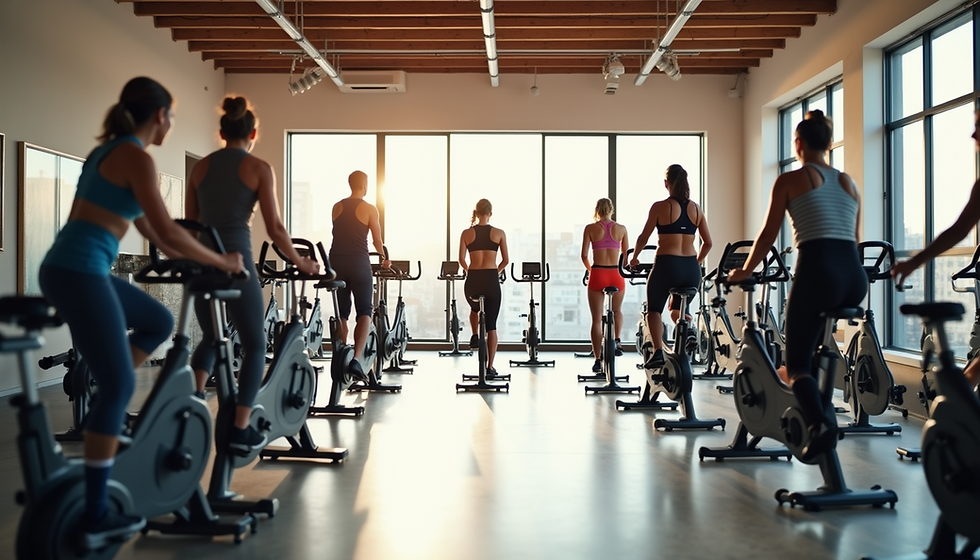Why Pilates is Perfect for Strength and Flexibility
- May 19
- 4 min read
Pilates is a low-impact exercise regime that has gained immense popularity over the years. Aimed at improving strength, flexibility, and overall body awareness, Pilates is not just a workout routine—it's a lifestyle choice that can yield incredible physical and mental benefits. Whether you’re new to exercise or a seasoned athlete, incorporating Pilates into your fitness regime can significantly enhance your health and wellness.
Pilates Benefits for Everyone
Many people might think of Pilates as a gentle form of exercise, but this is a misconception. The true benefits come from the methodical way it challenges your entire body.
Improved Core Strength: The foundation of Pilates is core stability. Engaging your core muscles during each exercise helps to build strength in your abdominal region, which can lead to better posture and less back pain. A strong core is crucial for everyday activities, from lifting objects to simply sitting at a desk.
Enhanced Flexibility: Unlike many other forms of strength training, Pilates places a strong emphasis on stretching and lengthening your muscles. This method promotes flexibility and coordination, allowing you to move more freely and with less risk of injury. Many participants notice improved flexibility after just a few sessions.
Better Posture: Frequent practice can lead to more awareness of body alignment. This awareness helps correct imbalances and encourages a stronger, more aligned posture, which can counteract the effects of prolonged sitting in front of computers.
Balanced Muscle Development: Pilates exercises are designed to work on all muscle groups evenly, ensuring that no single part of your body becomes overly developed. This balance in muscle development can greatly benefit athletes and those looking to enhance their physical performance.

Incorporating Pilates into Your Fitness Routine
If you are considering incorporating Pilates into your routine, think about the following strategies:
Schedule Regular Classes: Joining a Pilates class can provide structured guidance, ensuring you perform movements correctly while offering motivation. GoFest Active Studio offers Pilates on Thursday and Fridays mornings at 8am! For more information, check out these pilates class benefits.
Mix with Other Workouts: Combining Pilates with cardio or strength training can create a well-rounded fitness regimen. While Pilates focuses on core strength and flexibility, other forms of exercise can enhance your cardiovascular health.
Listen to Your Body: It’s crucial to be aware of your body’s signals. If something feels uncomfortable, modify the exercise or consult an instructor for guidance.
Set Realistic Goals: Whether you want to improve your flexibility, strength, or posture, setting realistic and measurable goals will keep you motivated.
Can You Get in Shape With Just Pilates?
The answer is yes, but with some considerations. Pilates can help you tone your muscles, increase flexibility, and improve posture. However, it’s essential to recognize that overall fitness encompasses multiple components, including cardiovascular health and strength.
Strength and Endurance: Many Pilates exercises build strength, focus on your core, and involve muscle contraction and relaxation. However, without incorporating cardio exercises or higher-intensity workouts, you may not achieve the level of cardiovascular fitness some people desire.
Consistency is Key: To get in shape with Pilates alone, aim to practice at least three to four times a week consistently. The more you practice, the more results you will see.
What’s Missing: While Pilates offers many benefits, you might miss out on the exhilaration of high-tempo cardio workouts. Activities like running, HIIT or swimming increase your heart rate significantly, which is something Pilates does not prioritize. Thus, consider cross-training for a more balanced approach.

The Mind-Body Connection of Pilates
Pilates is unique in that it emphasizes the mind-body connection. This blend of physical and mental workouts can lead to lasting changes not only in how we move but also in our overall mental health.
Mindfulness: Each exercise requires concentration and a connection to how your body moves. This focus can help reduce stress and improve mental clarity.
Breath Control: Breathing is an essential component of Pilates. Proper breathing techniques can help oxygenate your muscles and reduce tension, allowing you to move more fluidly and efficiently.
Empowerment: Engaging in regular Pilates practice can provide a sense of empowerment as you learn to control your body and capabilities.
Benefits Beyond the Mat
Remember, Pilates affects more than just your physical health. The philosophy extends to multiple aspects of life, leading to a more holistic approach to wellness.
Improved Confidence: As you build strength and flexibility, your posture and body language change, which can lead to boosted self-esteem.
Pain Relief: Many practitioners report reduced chronic pain, especially in the back and joints. The emphasis on alignment and controlled movements promotes joint health.
Increased Energy Levels: Regular movement encourages blood flow and oxygen delivery, resulting in higher energy levels throughout the day.

Final Thoughts on Pilates
Incorporating Pilates into your fitness routine can transform your body and mind. Whether you aim to improve strength, flexibility, or overall body awareness, Pilates can meet those needs effectively. By focusing on whole-body health and connecting mind and body, you create a well-rounded approach to fitness that can lead to sustainable results.
The benefits of this powerful practice can be remarkable, both on and off the mat. So, explore the world of Pilates and experience it for yourself—embracing the journey towards a stronger, more flexible you!








Comments